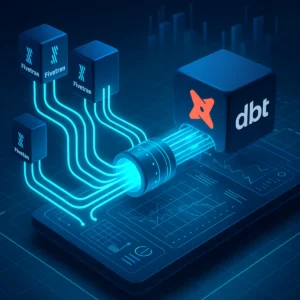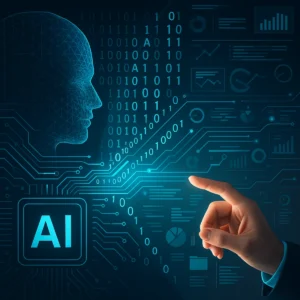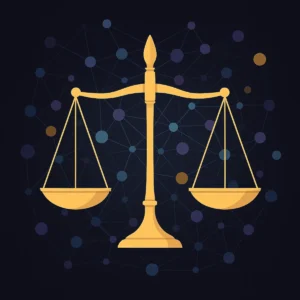In a move that could reshape the modern data ecosystem,...
Read More
In a move that could reshape the modern data ecosystem, dbt Labs and Fivetran have announced a shared product vision aimed at unifying data ingestion and transformation into a single, seamless workflow.
For years, Fivetran has been the go to platform for data integration, automating pipelines that move data from hundreds of sources into cloud warehouses.
Meanwhile, dbt (data build tool) has defined the standard for data transformation and modeling, empowering analysts and engineers to transform raw data into reliable, analytics ready datasets.
Now, the two companies are joining forces to deliver a tighter integration that eliminates friction between ingestion and transformation—bridging the gap between data movement and data modeling.
The Evolution of the Modern Data Stack
The traditional modern data stack has long followed a three step structure:
- Extract and Load (EL): Tools like Fivetran handle moving data from SaaS apps, databases, and APIs into a cloud data warehouse (like Snowflake or BigQuery).
- Transform (T): dbt transforms that data inside the warehouse into clean, analytics ready tables.
- Visualize and Analyze: BI tools like Looker, Mode, or Tableau provide reporting and insights.
While this modular approach enabled scalability, it also created complexity. Each layer had its own configurations, schedules, and dependencies forcing teams to manage handoffs manually.
The dbt Labs and Fivetran partnership aims to simplify this model by combining ingestion and transformation into a single, unified workflow.
What the dbt Labs and Fivetran Product Vision Looks Like
According to the official joint announcement, the new integration will focus on three key pillars:
1. Seamless Data Flow from Source to Model
Fivetran connectors will now integrate more directly with dbt models, enabling teams to:
- Automatically trigger dbt transformations after a Fivetran sync completes.
- Ensure that data freshness and transformation logic stay perfectly in sync.
- Monitor and orchestrate the entire pipeline through a single interface.
This means less waiting, fewer manual triggers, and more reliable pipelines.
2. Unified Metadata and Governance
By sharing metadata between both platforms, teams gain:
- Full data lineage visibility from source system to final dashboard.
- Impact analysis that shows how upstream changes affect downstream models.
- Simplified data governance and auditing across ingestion and transformation layers.
This level of transparency is critical for compliance, trust, and maintaining a clear understanding of where every data point originates.
3. Simplified Developer Experience
The partnership emphasizes a better experience for both data engineers and analytics teams. Developers will be able to:
- Configure ingestion and transformation workflows directly within dbt Cloud or Fivetran.
- Use dbt macros and testing frameworks to validate data as soon as it lands.
- Centralize alerts and error handling instead of juggling multiple systems.
The result: cleaner pipelines, faster iteration, and more consistent data quality.
Why This Matters for Data Teams
This announcement signals a major shift in how the modern data stack will evolve. Instead of relying on a patchwork of loosely connected tools, organizations can expect more integrated workflows that reduce operational overhead.
Here’s why it’s important:
- End to end observability: With ingestion and transformation aligned, teams can monitor the entire data lifecycle from one place.
- Reduced pipeline fragility: Automated synchronization between Fivetran syncs and dbt runs minimizes human error.
- Improved collaboration: Shared visibility between engineers and analysts enhances trust in data models.
For growing organizations, this unified approach offers the ability to scale analytics faster without scaling complexity.
The Road Ahead
dbt Labs and Fivetran aren’t just integrating APIs they’re reimagining the relationship between EL and T in the data lifecycle.
Future roadmap initiatives may include:
- Cross platform monitoring: Native alerts and dashboards that combine ingestion and transformation metrics.
- Enhanced lineage visualizations: End to end mapping across Fivetran connectors, dbt models, and BI layers.
- Declarative pipeline configuration: Write once, deploy anywhere without managing multiple tools.
The goal is clear: make the modern data stack simpler, faster, and more connected than ever before.
Conclusion
The partnership between dbt Labs and Fivetran represents a major milestone in the evolution of data infrastructure. By unifying data ingestion and transformation, they’re addressing one of the biggest pain points in analytics, which is operational complexity.
As the line between EL and T continues to blur, the winners will be data teams that adopt flexible, integrated ecosystems. This collaboration paves the way for a future where data flows effortlessly from source to dashboard, empowering organizations to make decisions at the speed of business.
Call to Action
💬 How do you see the dbt Labs and Fivetran product vision changing your data workflows?
👉 Share your thoughts in the comments or tag us on social media with your favorite features!
📩 Subscribe to our newsletter for more updates on modern data infrastructure, analytics engineering, and cloud data best practices.
Human Oversight: The Key to Smarter Automated Data Governance
As organizations rush to automate their data governance workflows, one...
Read MoreUnderstanding AI Bias: Where It Comes From and How to Reduce It
AI systems are shaping hiring decisions, credit limits, medical triage,...
Read MoreHidden in Plain Sight: Understanding Steganography in Modern Cybersecurity
In the world of cybersecurity, not every attack hides behind...
Read More



Leave a Reply